- Beautifully smooth, slick and rewarding to drive
- New 2.4L boxer engine gives much better performance
- Very much the RWD performance hero we need in today's world
- Rear seats aren't for transporting people
- It's gotten expensive and isn't the performance bargain it used to be
- Lacking key safety equipment such as AEB in 2023 is a sin
Toyota shocked the world back in 2012 when it launched the original 86 sports car. Priced from $29,000 plus on roads here in Australia, it was nothing short of a performance bargain. Loved by enthusiasts both young and old, the 86 signified the Japanese giant’s departure from making reliable, albeit bland cars, to vehicles which enthusiasts would want to own. 2022 saw the launch of the 86’s sequel, the GR86. Tested here in its cheapest spec, the 2023 Toyota GR86 GT with the manual transmission promises to be the continuation of the perfect attainable sports car.
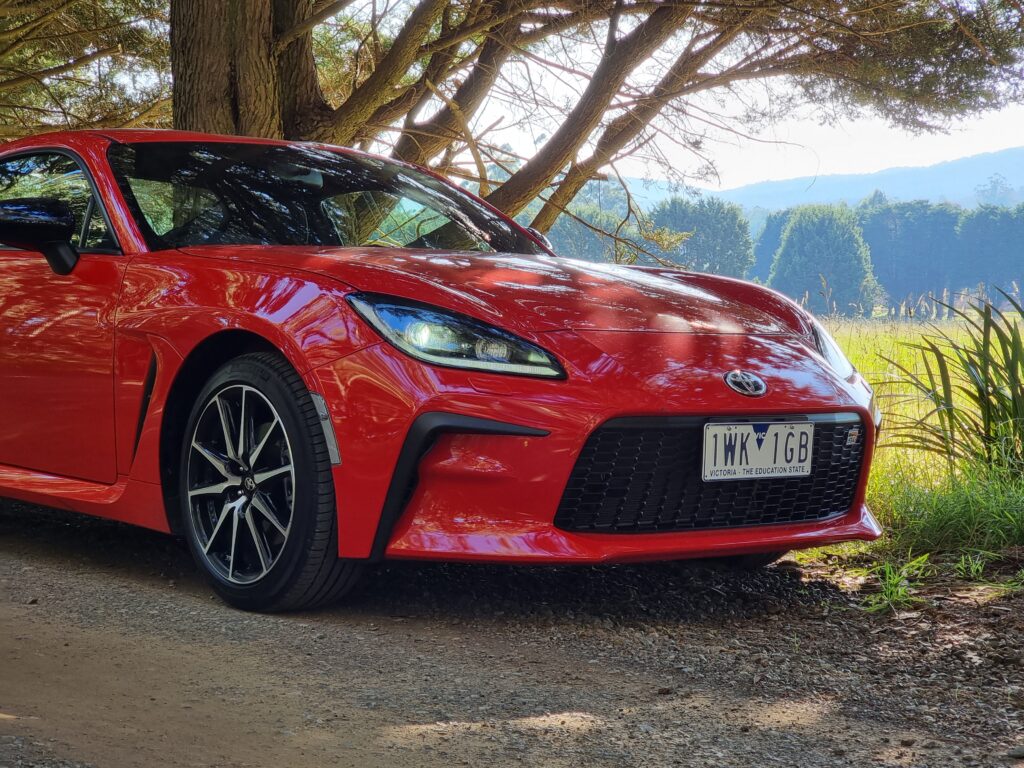
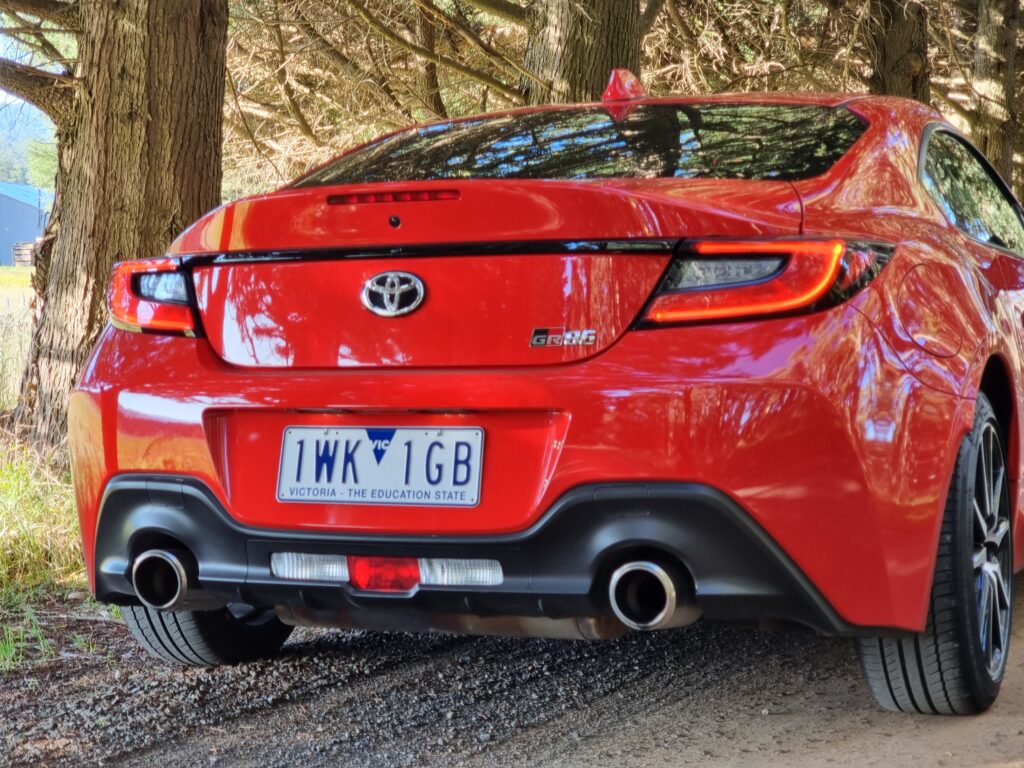
Although it might use the same body and underpinnings as the original 86, the GR86 has been given a more powerful engine, and a thorough rework to make it more involving and engaging for drivers. Joining other Toyota greats such as the mighty GR Corolla, GR Yaris and GR Supra, the GR86 shows the world that Toyota has once again gone out to make a lightweight, rear-wheel drive hero. So has Toyota succeeded? Or has the GR86 become a little too expensive for its own good? There’s only one way to find out.
Price & Equipment: 6.5/10
The 2023 Toyota GR86 range kicks off with the entry-level GT that we tested here and the upper-spec GTS. Pricing for the Toyota GR86 GT starts at $43,240 plus on-road costs (roughly $48,000 drive away) and steps up to $45,390 plus on-road costs for the GTS. Manual versions cost the same as auto models. Sadly, manual models miss out on absolutely critical life-saving safety equipment. AEB and lane departure warning are both missing. A big black mark for the GR86 in manual spec, considering the GR86 in automatic has this safety equipment as standard – for the same price! Lane keep assist, adaptive cruise control, auto high beam, rear parking sensors, tyre pressure monitoring system and reverse auto braking are all missing from the manual, but found on the automatic. A future update should address this issue. Safety kit offered on the manual GR86 includes seven airbags, a hill holder, stability control a reversing camera and an alarm.
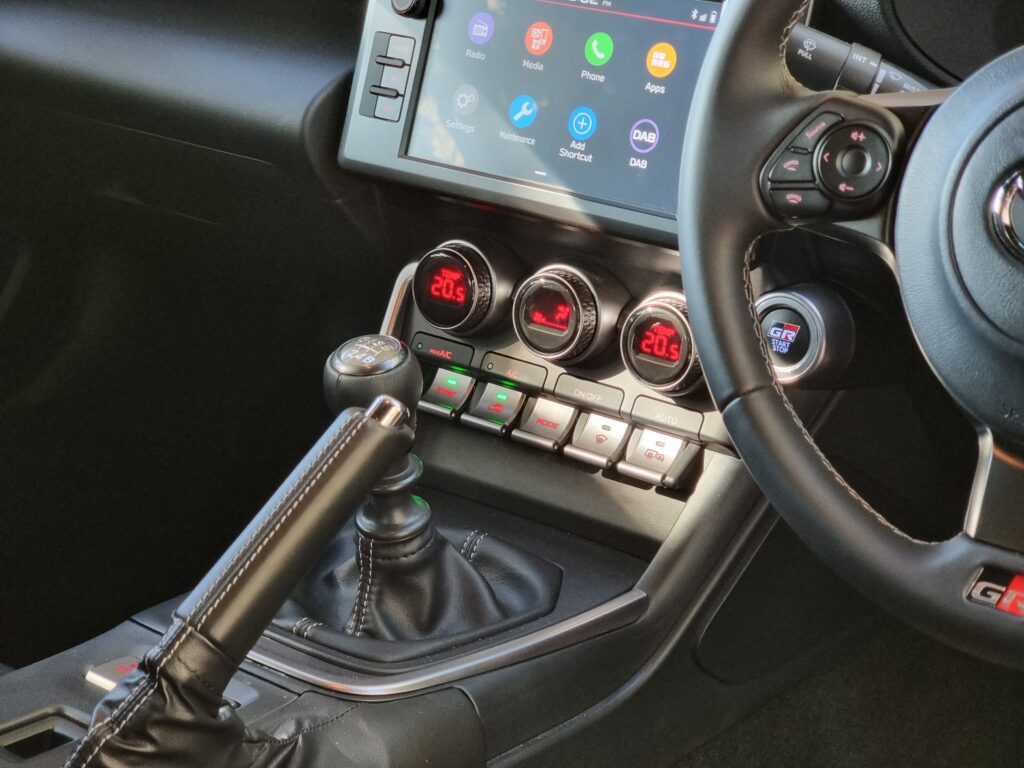
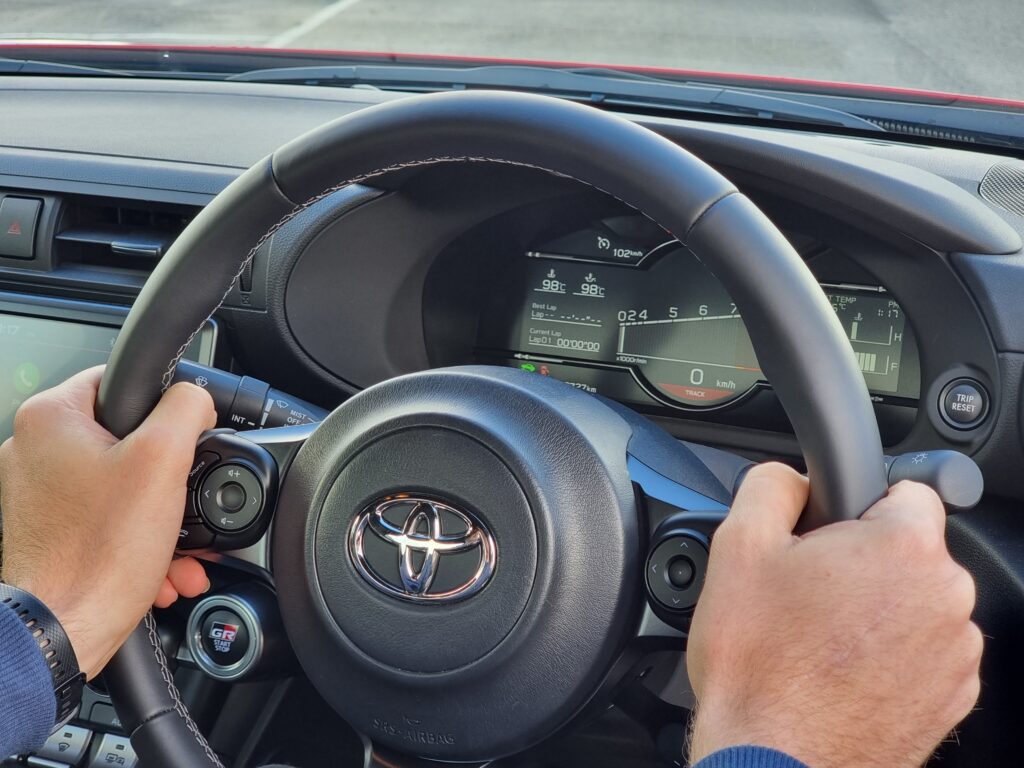
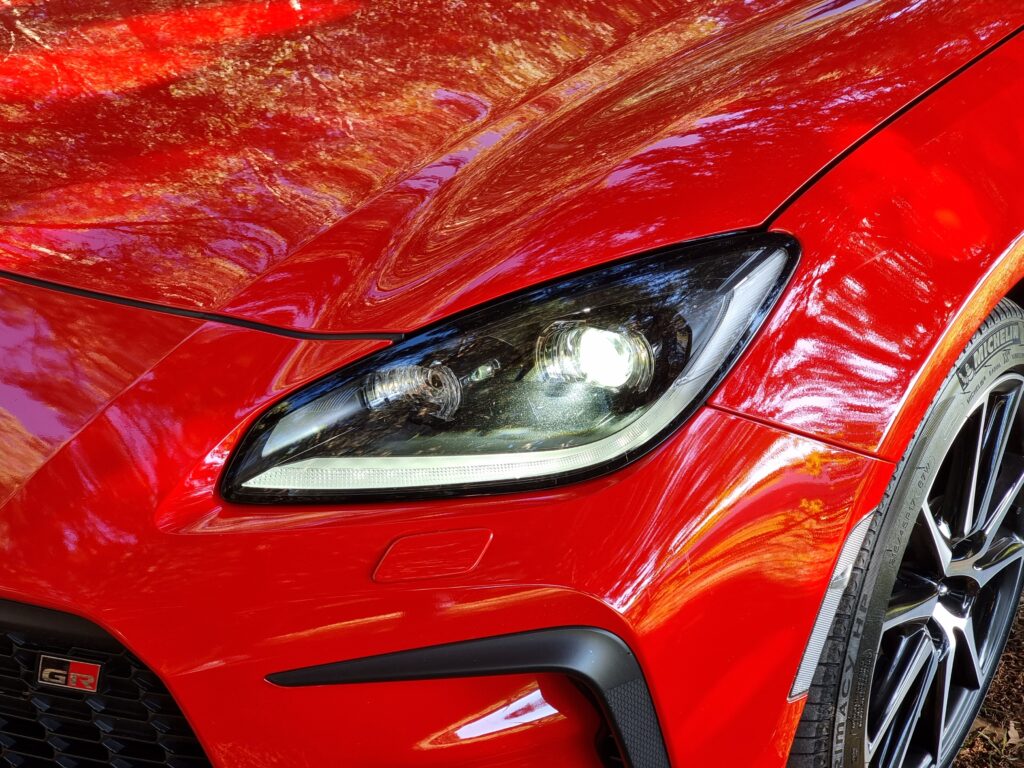
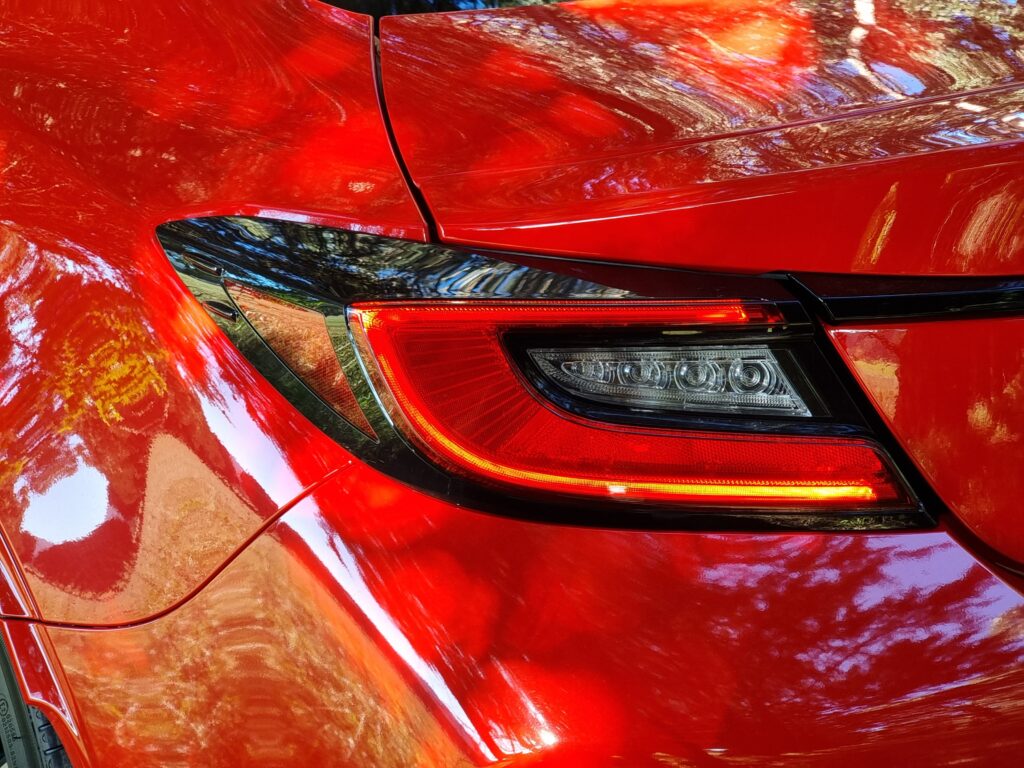
The 2023 Toyota GR86 GT comes reasonably well equipped with 17-inch alloy wheels, dusk-sensing automatic LED headlights, LED taillights, dual-zone automatic climate control, keyless entry and start, power-folding and heated exterior mirrors, an 8.0-inch touchscreen with wired Apple CarPlay and Android Auto, digital radio, a six-speaker sound system, a 7.0-inch digital driver’s display, cloth upholstery, a leather steering wheel and leather gear knob and a limited slip differential.
We would like to see the addition of parking sensors, front fog lights, auto-folding mirrors and navigation wouldn’t go amiss either. The more expensive GR86 GTS adds larger 18-inch alloy wheels wrapped in stickier Michelin Pilot Sport 4S tyres, blind-spot monitoring and rear cross traffic alert, cornering headlights, leather and alcantara upholstery, heated seats, faux leather door inserts, sports pedals, courtesy lamps, scuff plates. In other words, it’s absolutely worth the extra $2,150 spend and adds some creature comforts, as well as some improved handling talent to an already decent package.
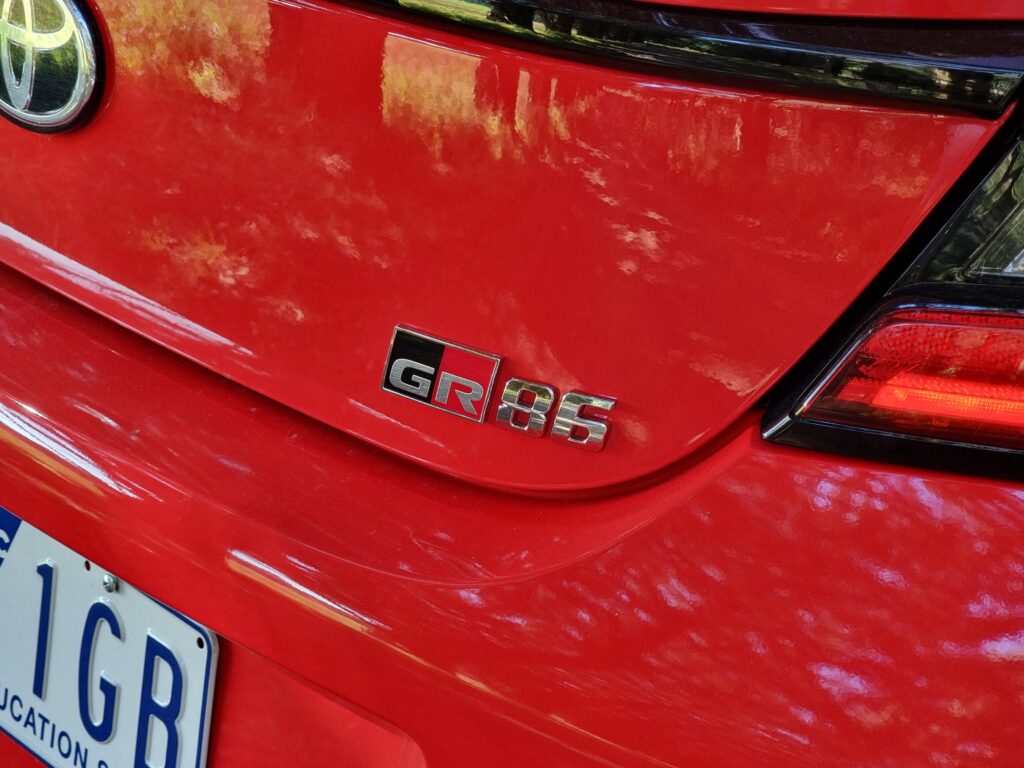
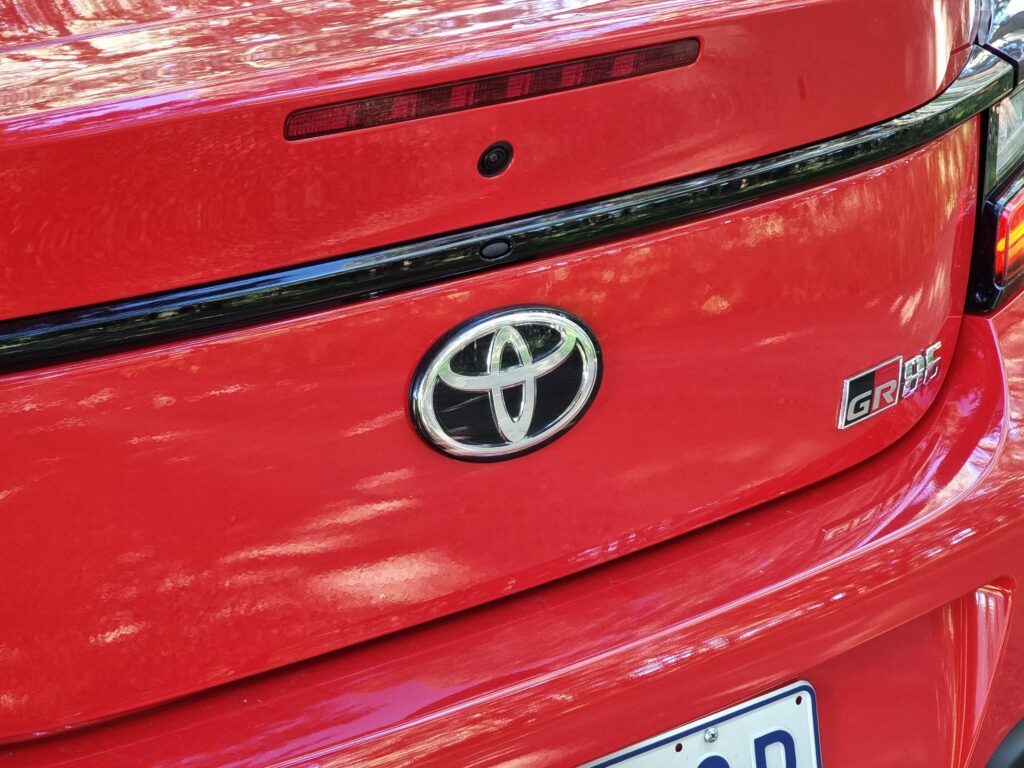
The only standard colours available on the 2023 Toyota GR86 GT are ‘Apollo Blue’ and ‘Spark Red’. For an extra $575 you can choose from ‘Storm Black’, ‘Rapid Blue’, ‘White Liquid’, ‘Magnetic Grey’ and our test car’s ‘Ice Silver’ paintwork. There are no optional extras on the GR86.
RWD coupes at this price point are rare and apart from its twin under the skin Subaru BRZ, the main competitor for the 2023 Toyota GR86 GT is the Mazda MX-5, which costs around $43,500 in six-speed automatic form for the convertible roadster with a manual folding top. The hard top convertible targa MX-5 RF starts from $48,000 driveaway. The GR86 is an altogether newer car and the two promise similar driving fun, though it’s the Mazda which features key safety equipment such as AEB.
Performance & Economy: 9/10
The old 86 always drew criticism for its lack of outright speed in a straight line. Toyota wanted to keep the car pure and uncorrupted in a world of spiraling weight. This new GR86 ushered in a 2.4-litre naturally aspirated boxer four-cylinder petrol engine that was co-developed with Subaru. The engine produces 174kW of power at 7,000rpm and 250Nm of torque at 3,700rpm, which is a full 27kW and 45Nm more than the outgoing 86. Frankly, and as much as we loved the old 86, the new engine is a godsend. It simply endows the GR86 with much more usable torque day to day and makes it feel significantly faster than its predecessor. The 0-100km/h sprint time is around 6.5 seconds and the GR86 feels rather swift. It’s no longer dependent on chasing the redline to make decent progress down the road ,instead there’s a big dollop of torque around the 2,500rpm mark. A job well done to Toyota and Subaru.
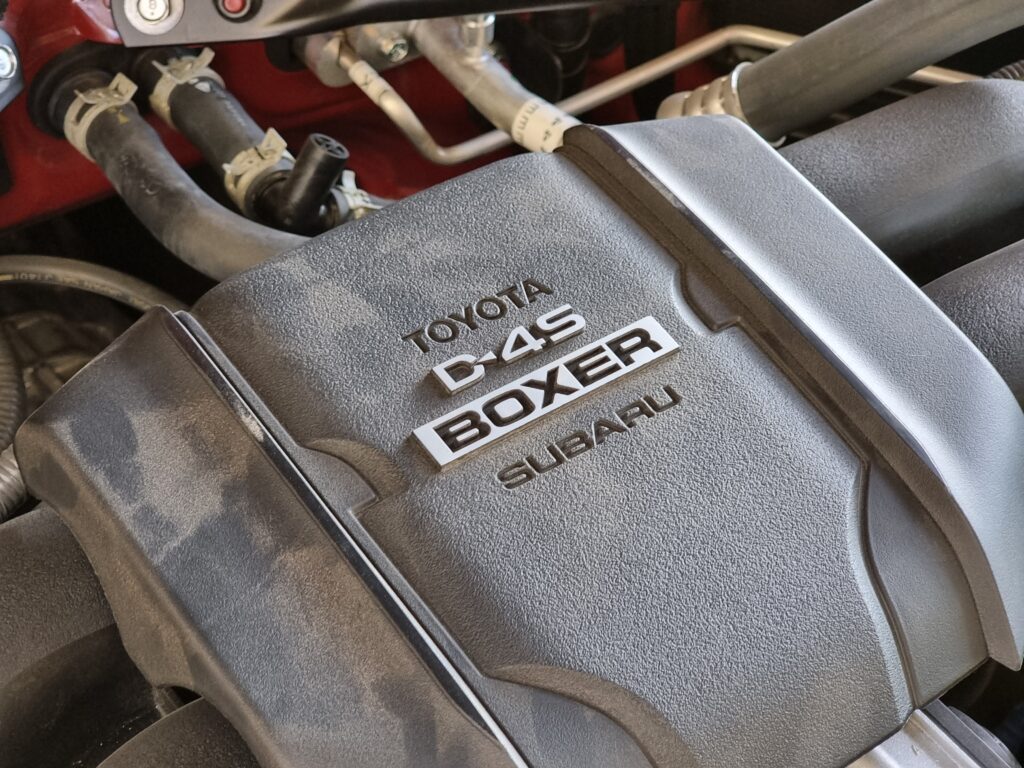
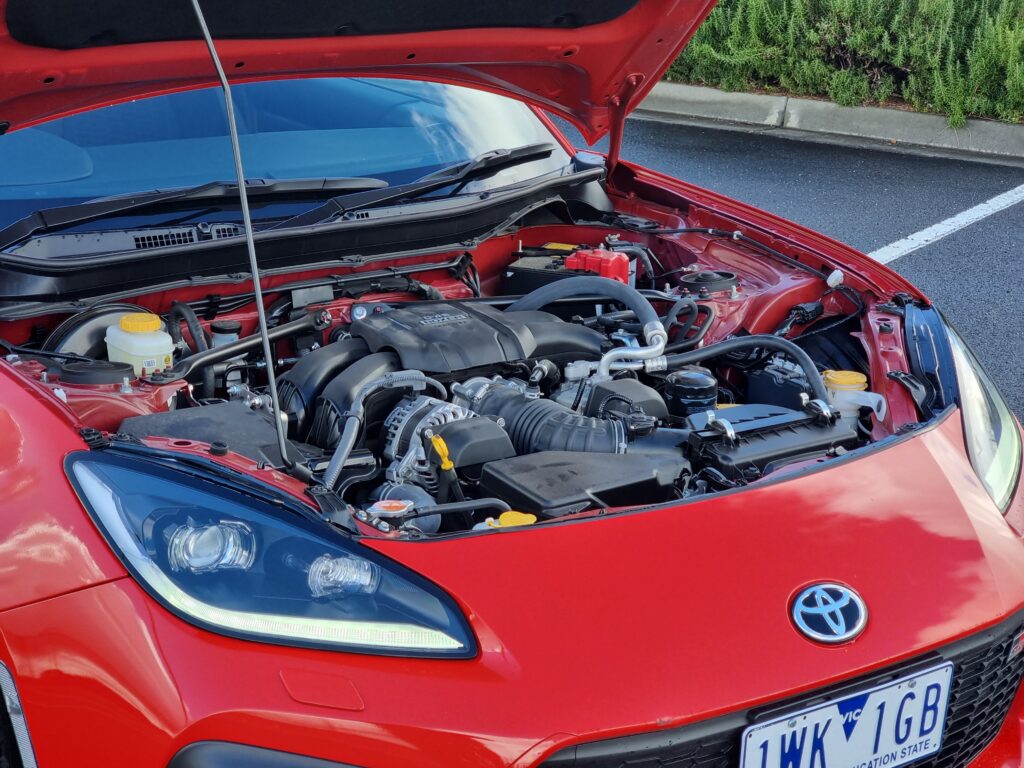
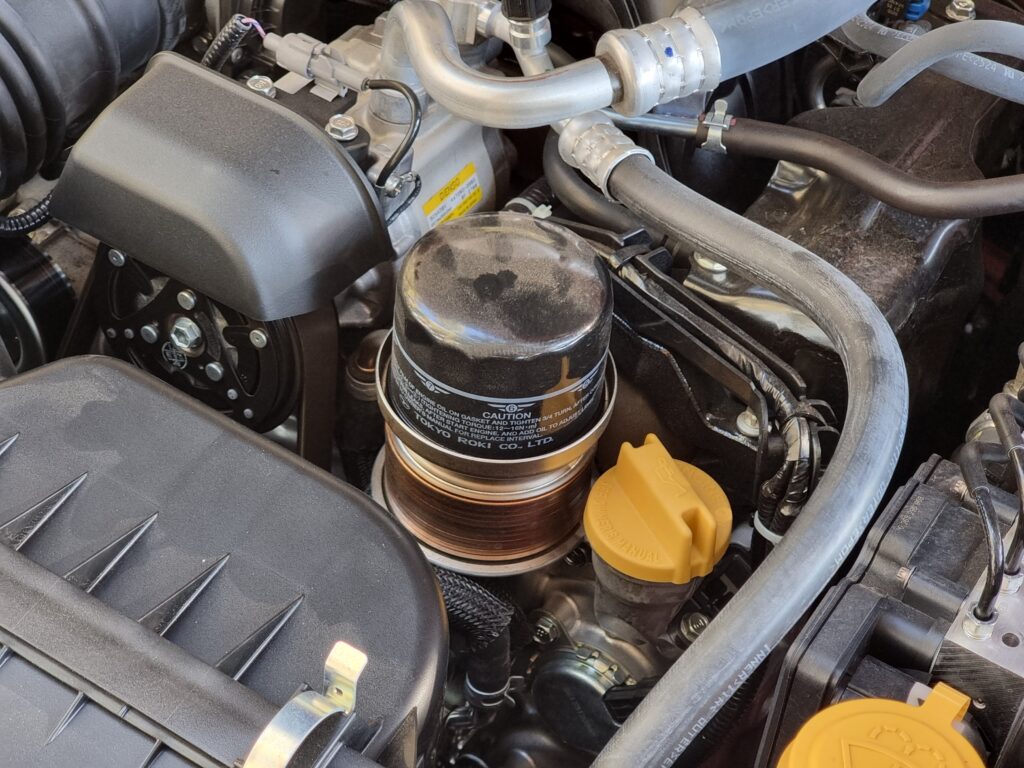
The whole drivetrain just feels much more at ease in the GR86 and unlike in the 86, the engine now adds to the appeal of the GR86. Sure it can get a little raucous and loud under full throttle acceleration, and sends quite a lot of vibration into the cabin, but it behaves exactly like we would expect from an old-school, back to basics sports car hero. This is not a car for those seeking a refined experience, this is about deriving as many driving smiles form the miles covered.
Adding to the driving experience is the GR86’s close ratio six-speed manual. We’d choose the manual everyday over the no extra cost a six-speed torque converter automatic we tested previously. The shift feels beautifully mechanical, the clutch short and sharp. Simply put, this is a drivetrain crafted for drivers, by drivers, and brings out the very best of a car like the GR86. We just wish the manual variant had the same safety features as the automatic.
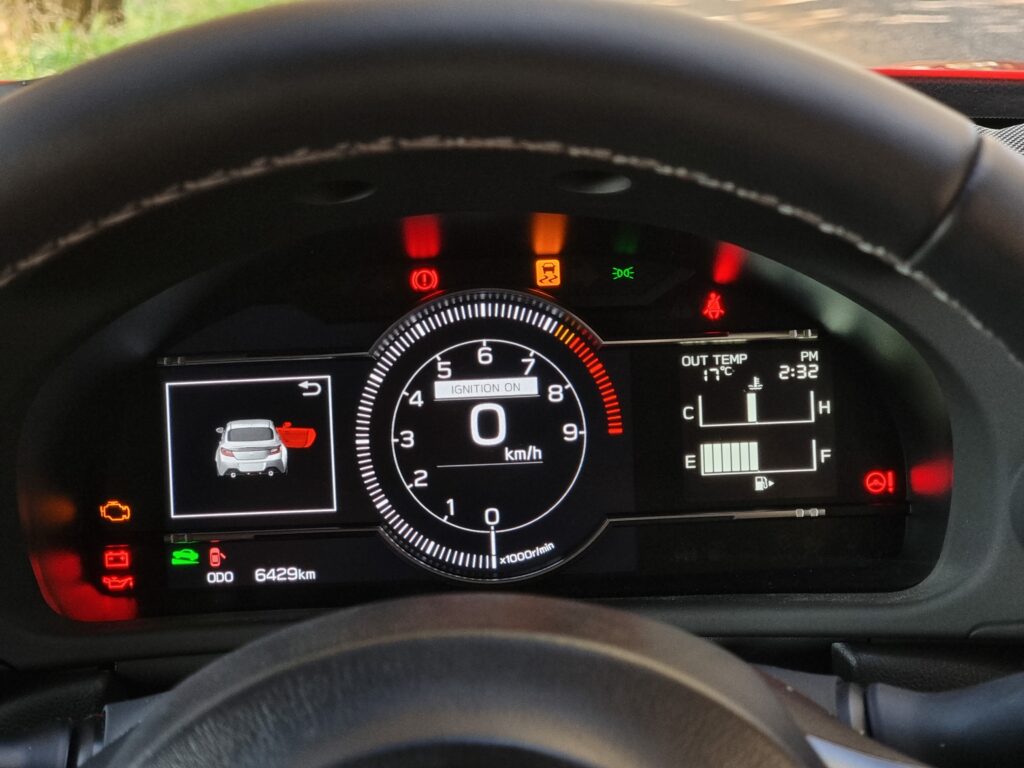
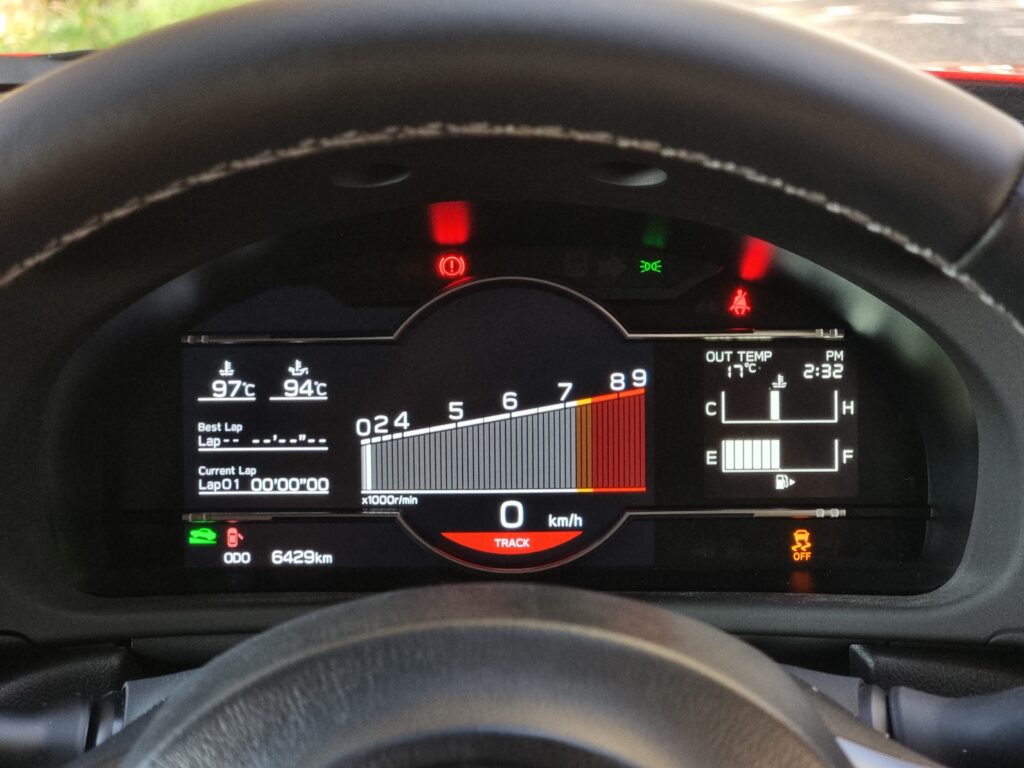
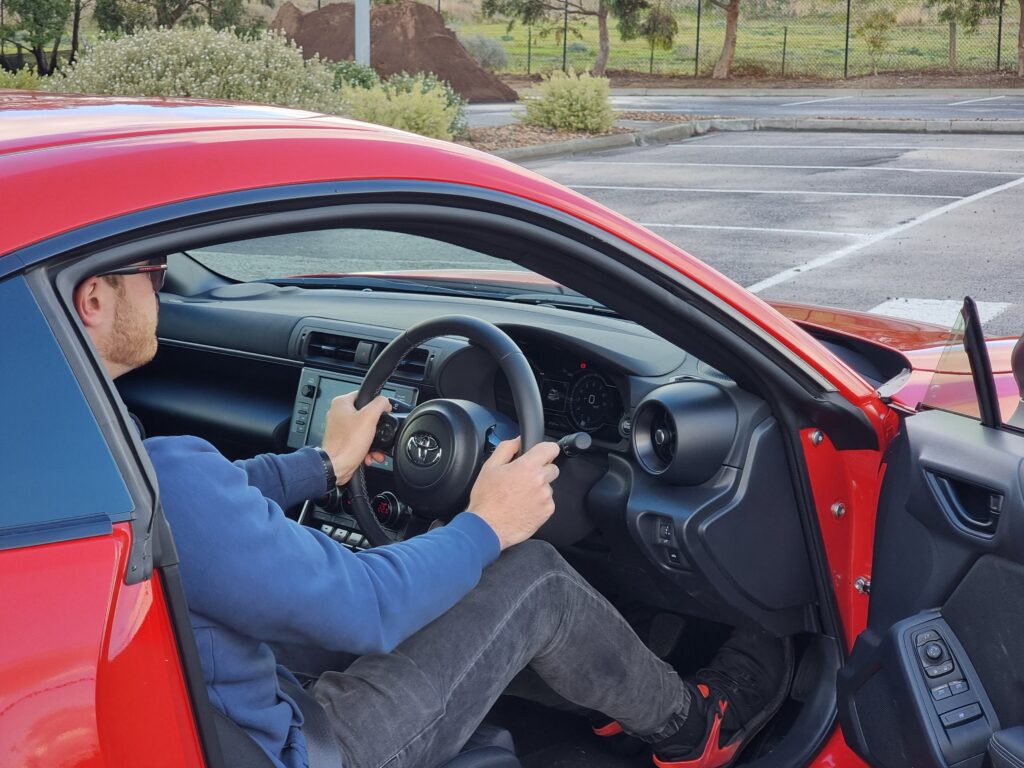
The claimed average fuel consumption of the 2023 Toyota GR86 GT manual is a rather thirsty 9.4L/100km and in our time with it, we achieved around 10L/100km. Don’t be fooled by the consumption on paper, the great things is that the GR86 matches that figure in the real world, unlike many hot hatches. The GR86 has a 50-litre fuel tank and requires 98RON premium unleaded fuel.
Ride & Handling: 9/10
The original 86 was all about being lithe, poised and precise. It heralded an ethos of being lightweight, uncomplicated and nimble. The GR86 takes the ride and handling of the 86 and improves things in areas that matter most for owners. Find a technically complex road, with hairpins, undulating corners and steep drops, and the GR86 rewards drivers with delicacy and accuracy. Provided your driving skills are up to the task, the perfectly balanced 50:50 chassis is a peach to hustle along. The car turns in sharply with little body roll, turns keenly and allows drivers to get on the gas early with a limited slip diff that applies power to the rear wheel with the best grip. This is a car that is sublime fun and one endowed with impeccable balance. Ditto to the steering which is beautifully weighted and super immediate off centre.
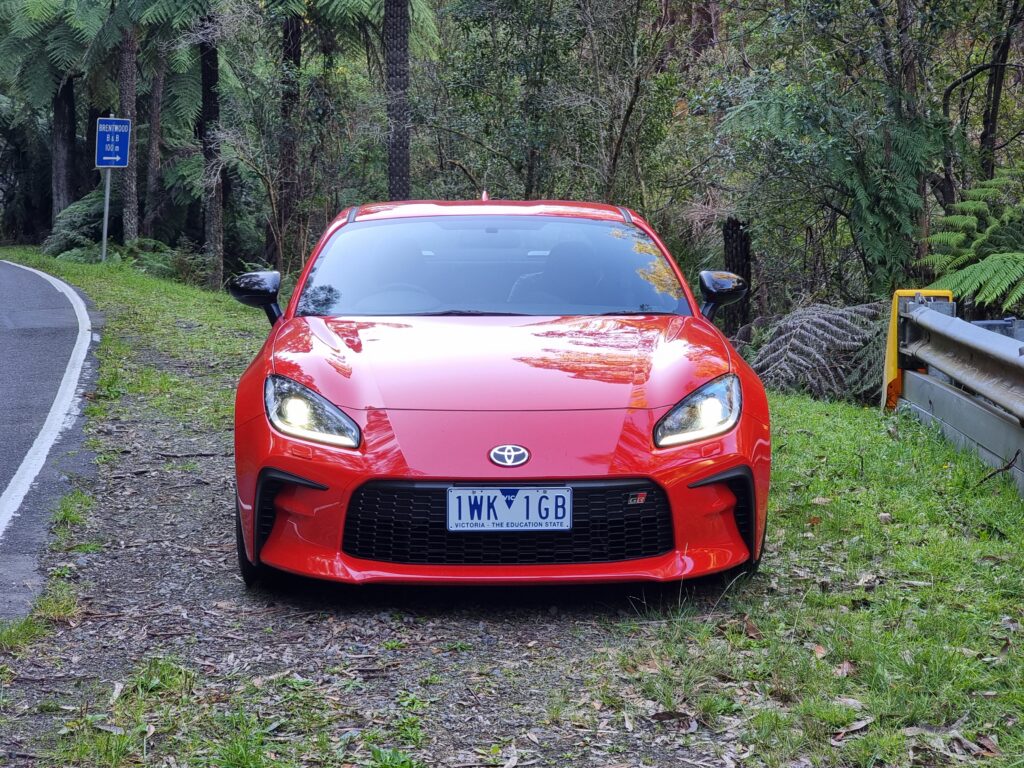
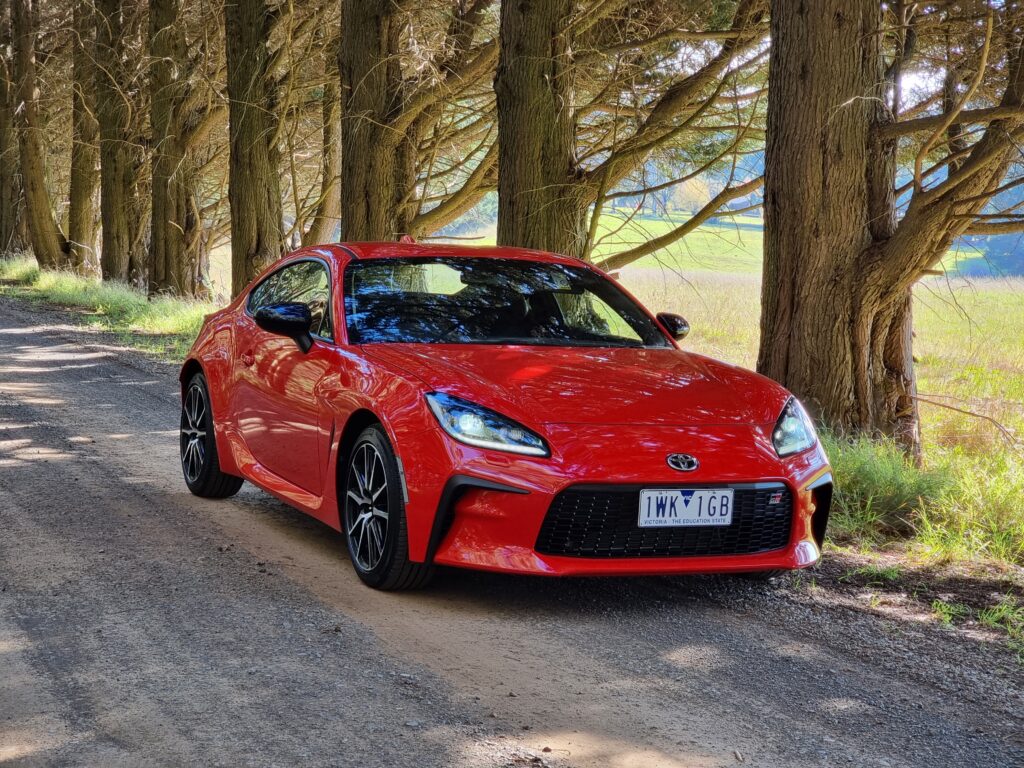
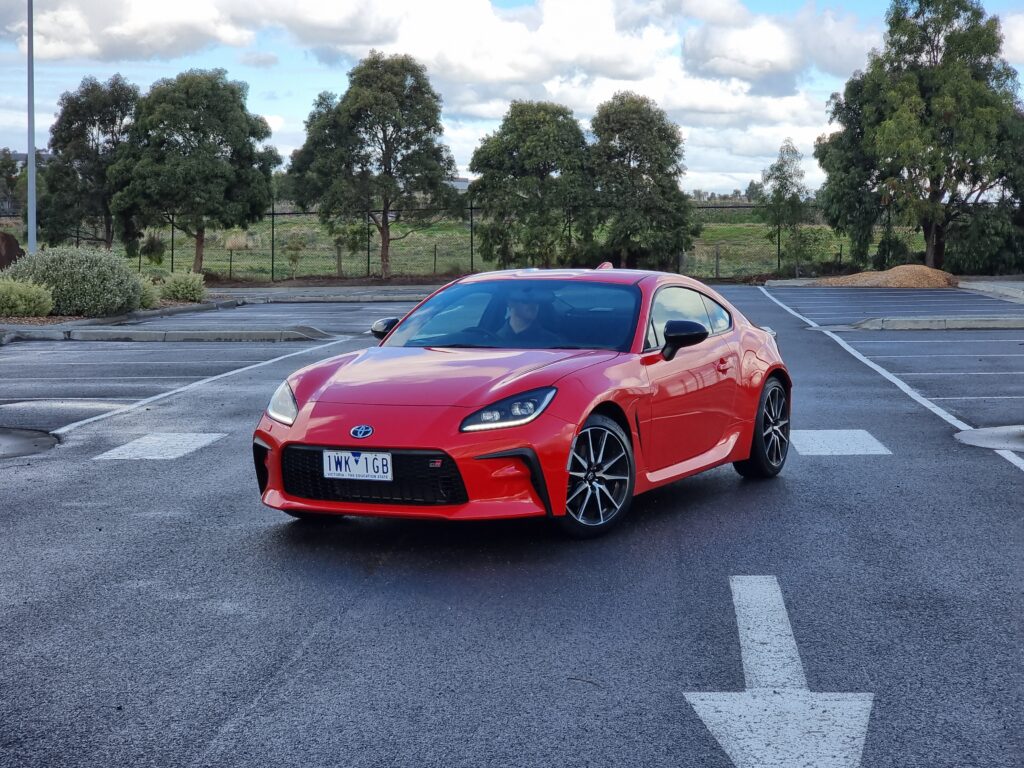
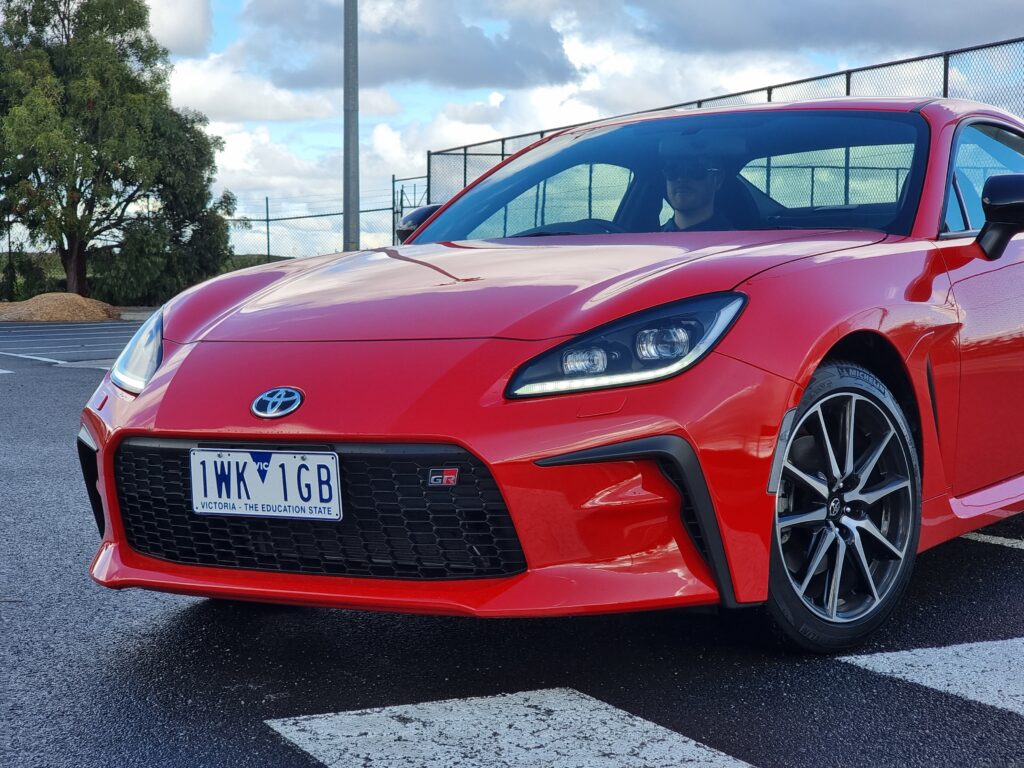
Not all is perfect however on the handling front. The GR86 in GT spec comes with rather modest 215/45/R17 Michelin Primacy HP tyres. The size is a little on the narrow side, and when coupled to a Michelin mid-range touring tyre which is also fitted to the Prius, grip is certainly lacking both in the wet and in the dry. Luckily, the GR86 is super controllable and well mannered, giving plenty of warning prior to the rear end stepping out. We suspect the GR86 GTS’ 18 inch rims with Michelin Pilot Sport 4 tyres offer much more grip. Where the Michelin Primacy tyres performed well in the old 86, the extra power and weight of the GR86 tends to overwhelm them a little to easily.
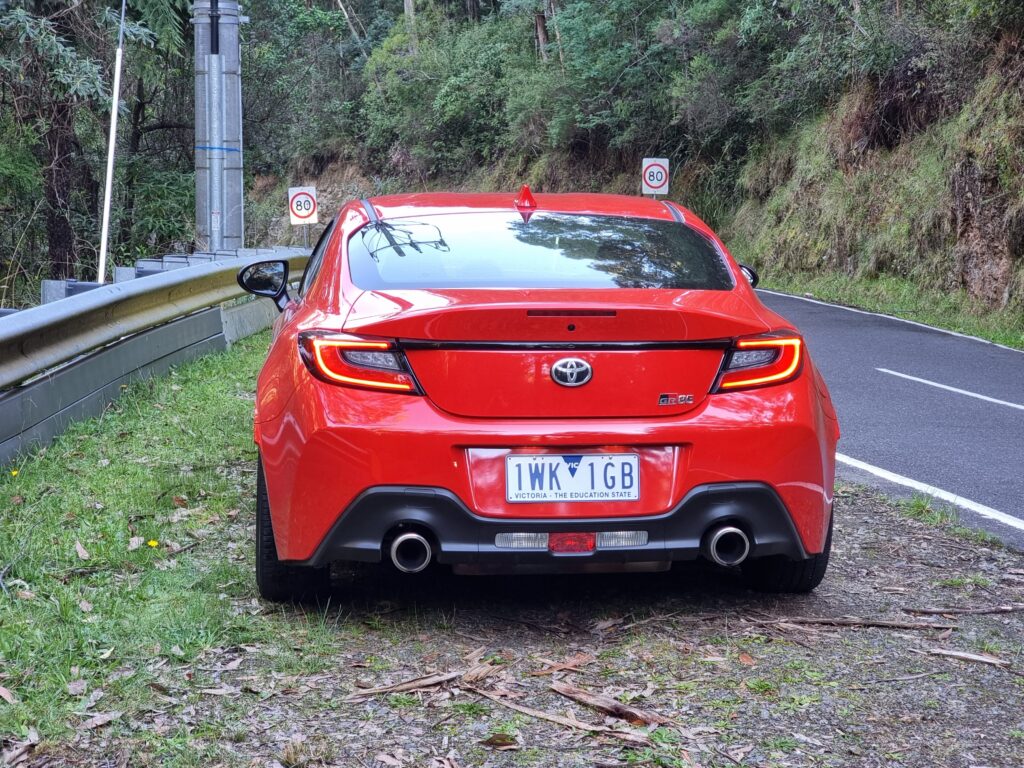
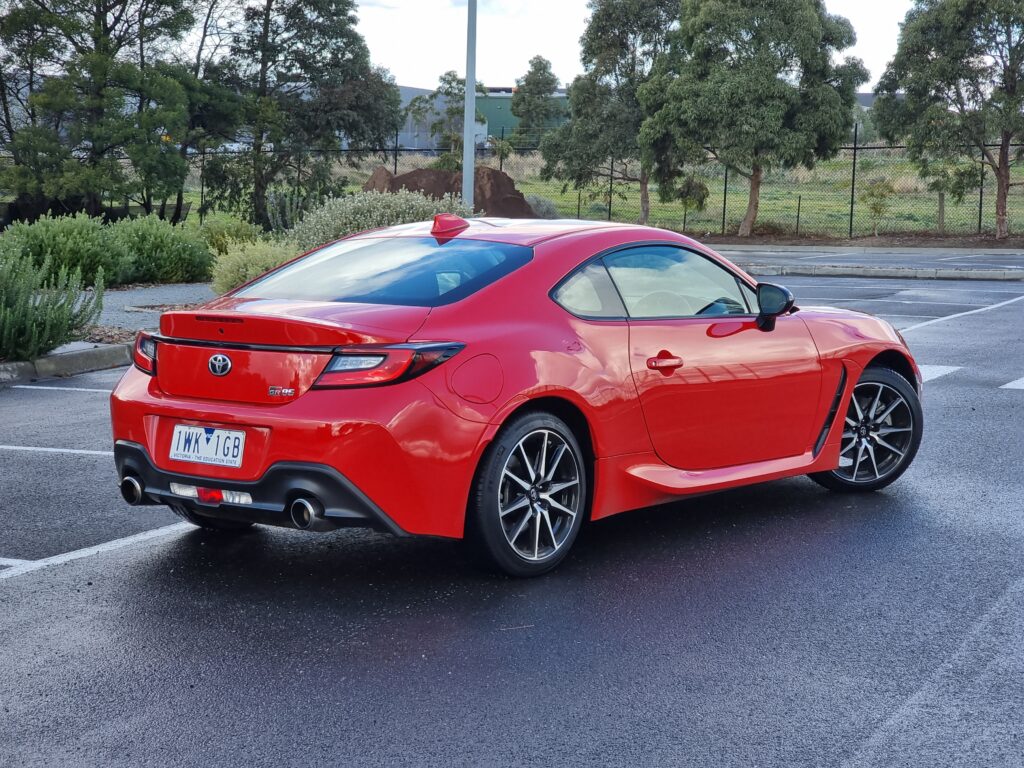
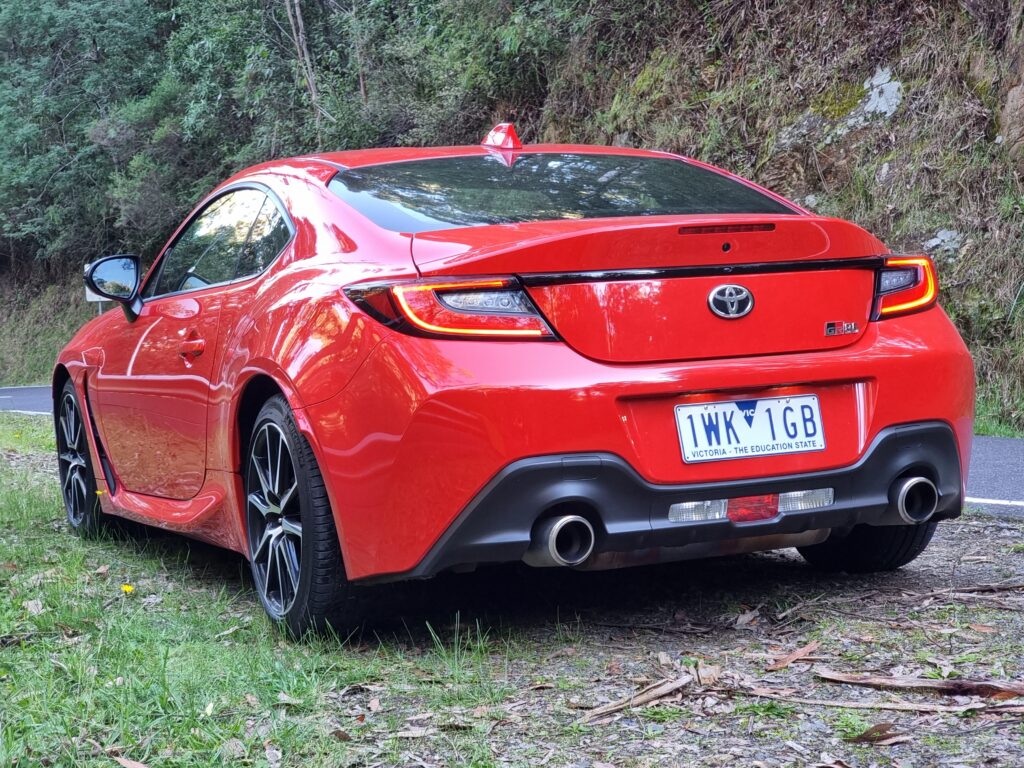
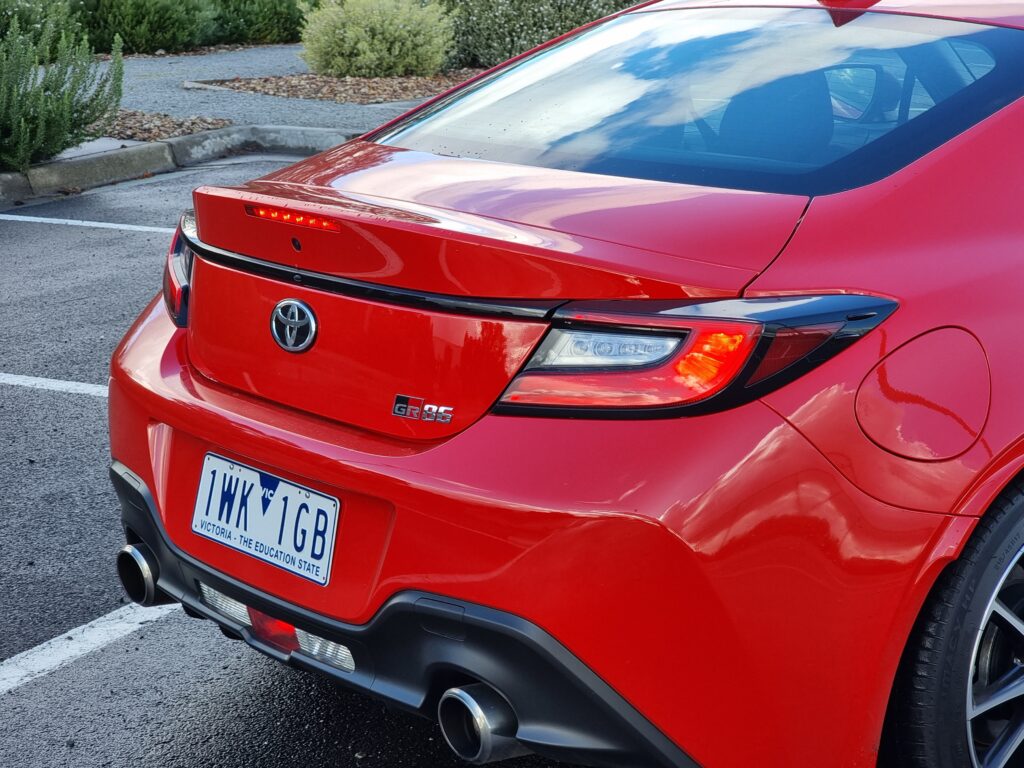
The upside to those fairly humdrum tyres is that the GR86 rides pretty well both around town and on the open road. It feels taught in the way it never lets bumps get on the driver’s nerves. Sure, it’s firm, but around town the GR86 is perfectly livable day to day. Sadly, longer journeys will prove to be a chore on account of the GR86’s road noise levels. Toyota hasn’t fitted any sound deadening to keep the car’s weight down and this shows. There’s a lot of tyre roar on country roads and wind noise makes itself known at freeway speeds. Still, things aren’t too bad for a sportscar.
Interior & Practicality: 8/10
Where the old Toyota 86 offered a rather spartan, yet driver focused interior, Toyota has worked hard to make the GR86’s interior a more inviting place to spend time in. The overall design is much the same as before, but things such as the central touchscreen, climate controls and instrument cluster have been brought up to 2023 standards. Toyota didn’t feel the need to play with the design of the centre console and doors trims, while the dash has been given a bit of a refresh with an emphasis on higher quality materials. Everything feels pretty well screwed together, as you’d expect from a Japanese manufacturer. We weren’t fans of the steering wheel in the automatic GR86 we tested before, and the same holds true here. The rim falls a little too loosely to hand, and doesn’t feel as premium as the one seen in the GR Yaris and GR Corolla.
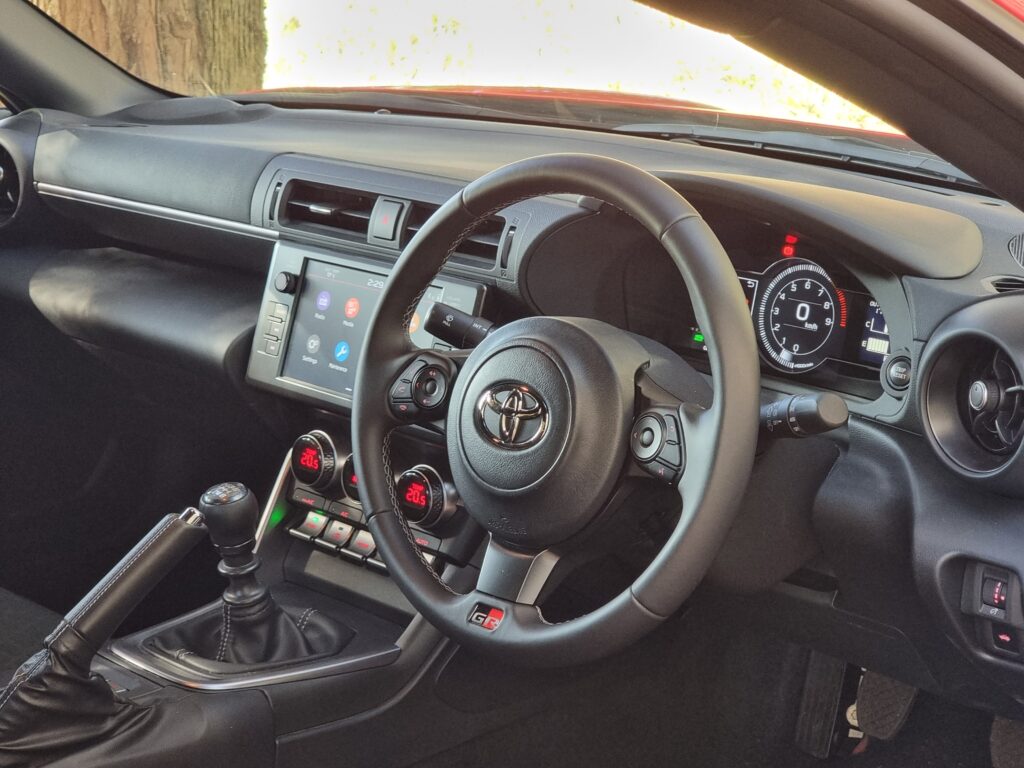
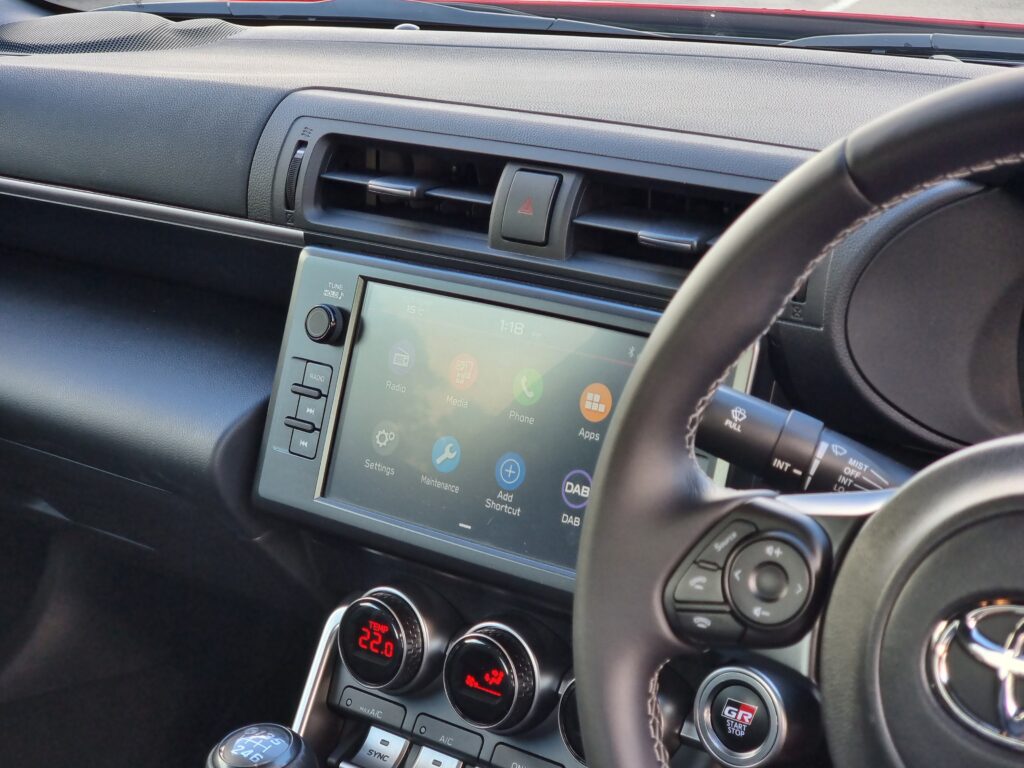
As the base model of the range, GR86 GT comes with rather basic looking cloth seats. Luckily, they hold front occupants in very snuggly and offer the perfect amount of support where needed. Storage up front is decent, with two cup holders that also double as the centre console with a lid to hide valuables, a cup holder or phone storage area in front of the centre console, bottle holders in the front doors and coin storage next to the manual handbrake. Oddly I found it impossible to close the centre console’s lid with my USB cable plugged in, a rather big oversight considering plugging in a phone is needed for Apple CarPlay and Android Auto.
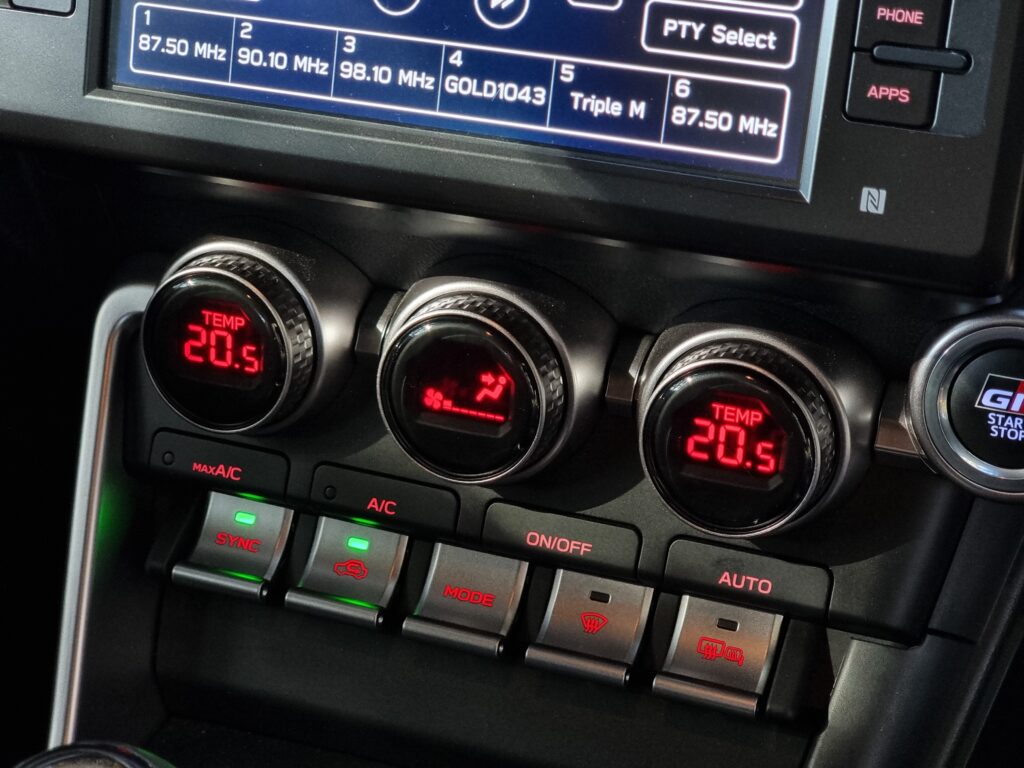
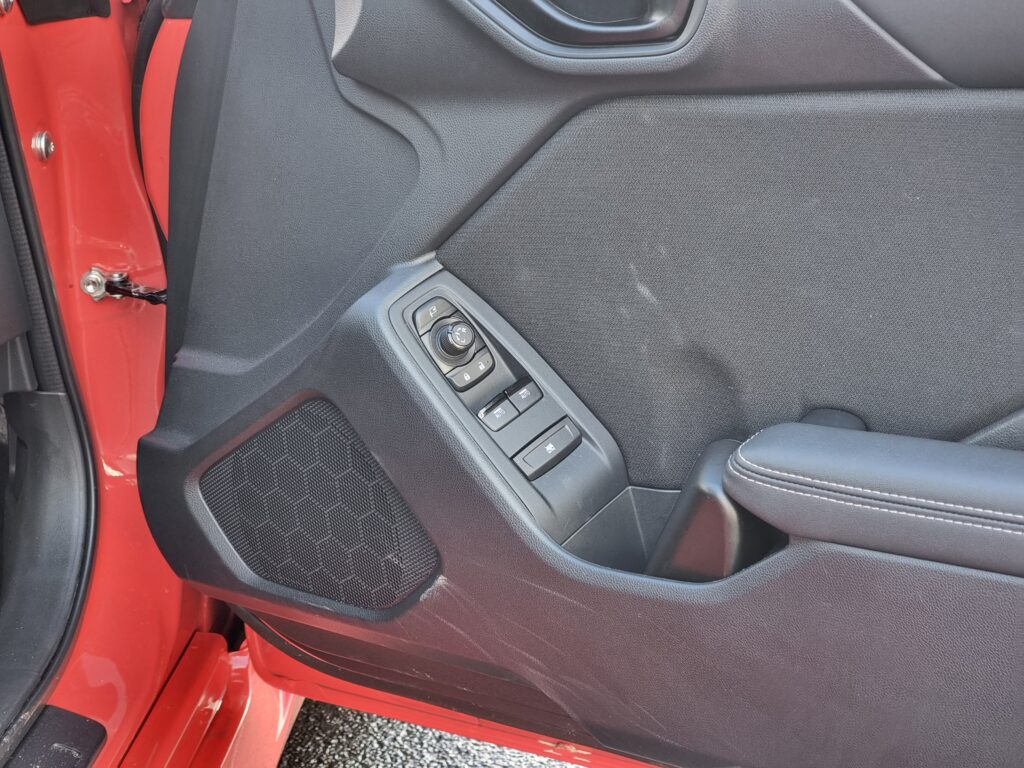
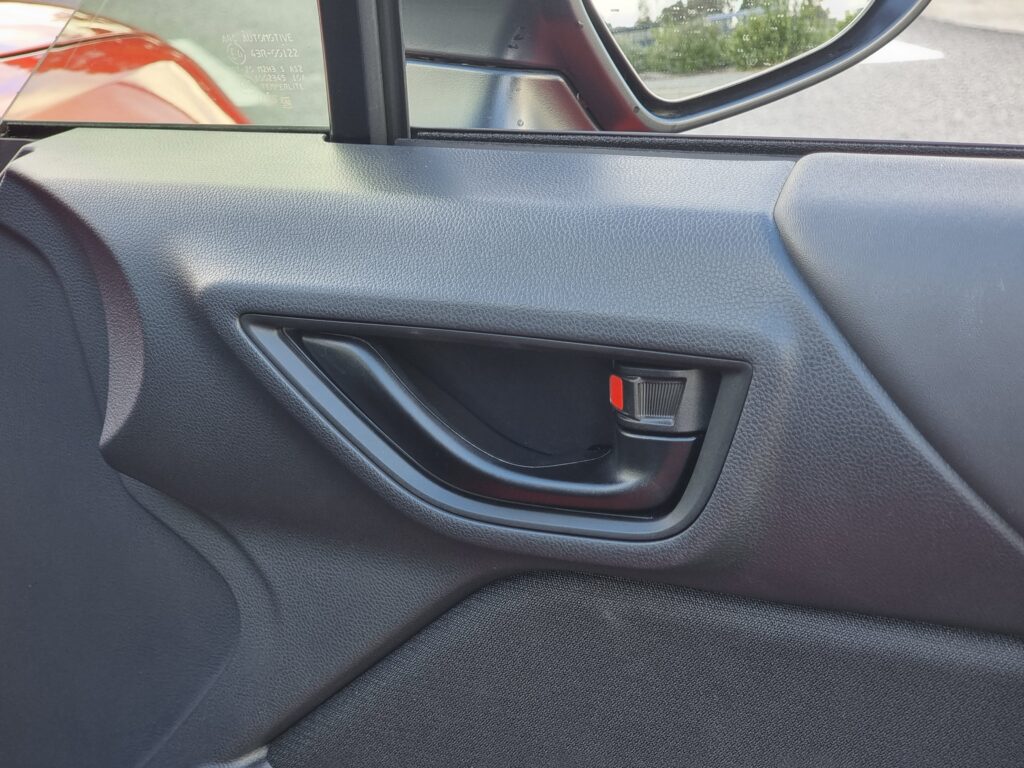
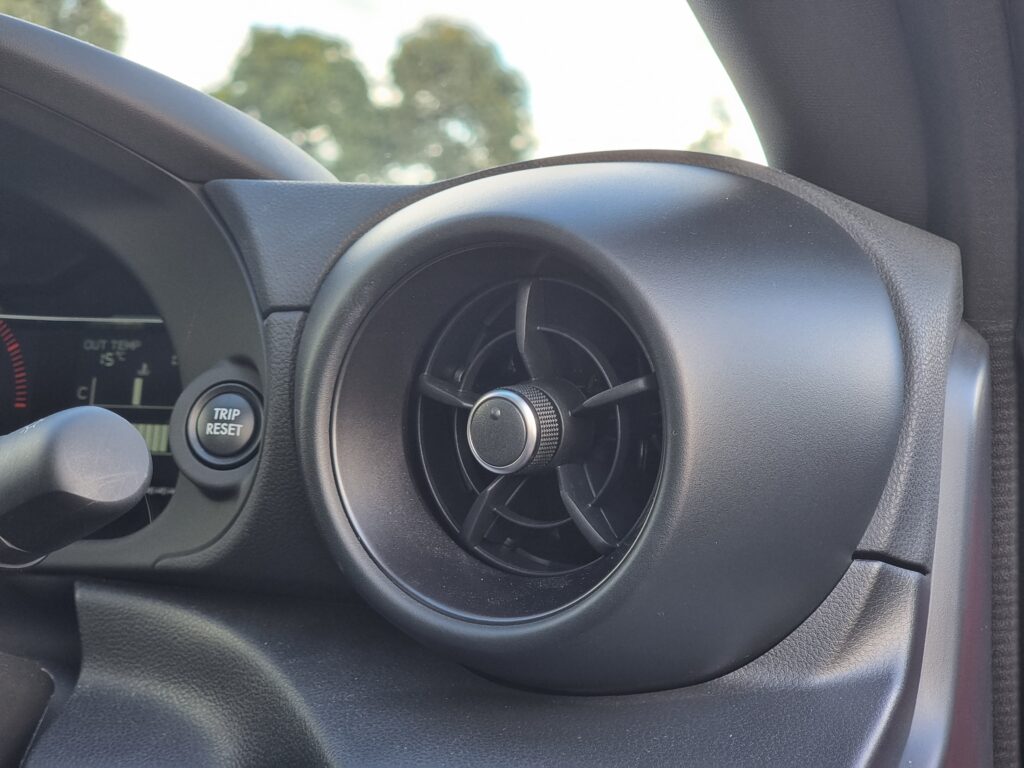
The instrument cluster feels a little yesteryear with its basic 7.0-inch digital display. The screen offers almost no customisability, but we love that it still manages to display all the key driving parameters we would expect from a sportscar. Operating temperatures and pressures are account for, as is a handy dyno graph and G-force meter. Putting the GR86 in track mode changes the layout of the gauges, giving the driver a large tachometer.
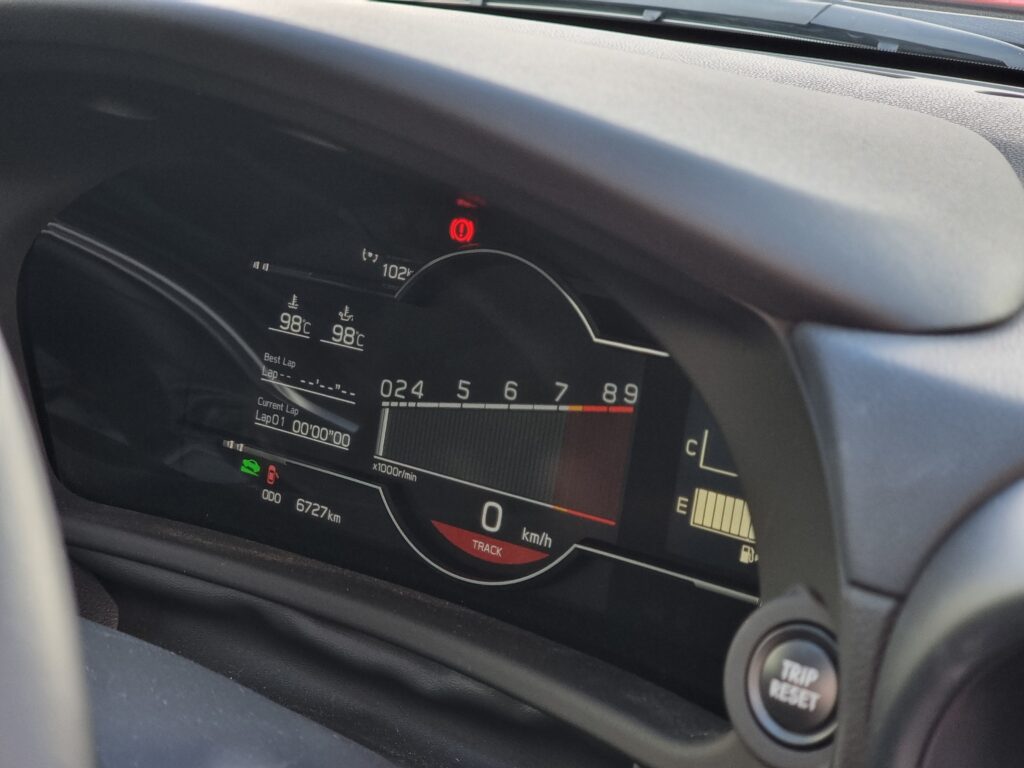
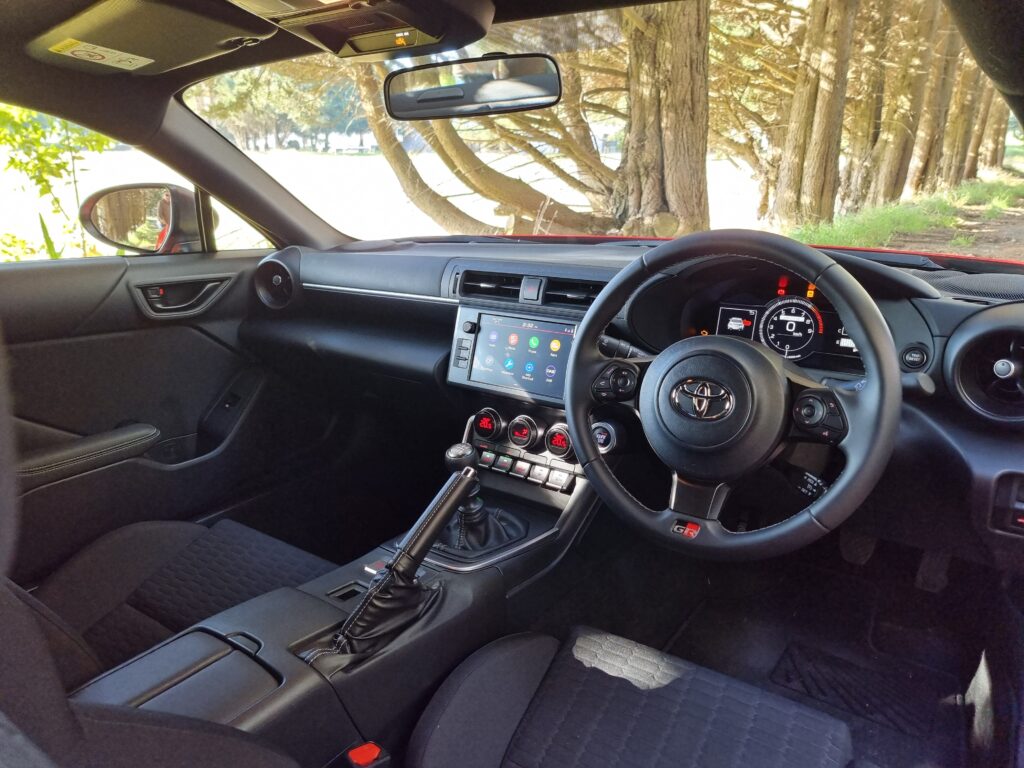
The 8.0-inch touchscreen might is godsend compared to the low resolution screen in the old car, and with wired Apple CarPlay and Android Auto works well, echoing the car’s simple and easy to use vibe. The screen quality is a little on the poor side in 2023, with the screen appearing hazy and a little unresponsive. It’s clear this screen is not from the same league as the latest Toyota crop, such as the one found in the GR Corolla. On the flipside it is very easy to use with the shortcut buttons to the side of the screen and features a digital radio and a decent rear-view camera too. The six-speaker sound system is decent too, without offering the premium audio experience we would expect from a branded Bose or Harman Kardon system.
Those hoping the GR86 would be bigger inside than the 86 are bound to be disappointed. The GR86 is very much a 2+2 sportscar, where the rear seats are essentially a space to store snacks for front occupants. Entry and egress is said to be better than in the 86 and sure, if you’re a contortionist sliding in the rear seat won’t be an issue. For mere mortals, the ordeal is a little unflattering and space is really limited in the second row with very little legroom, kneeroom and no headroom.
Opening the boot shows off the GR86’s reasonable 237-litres of cargo space, which is far more capacious than an MX-5. The high boot floor and shallow opening nonetheless will stand no chance when compared to any hot hatch. There is also no spare tyre in the GR86, but a tyre inflation kit in its place. Folding the seats down does yield a nice flat load bay. Think of the GR86 as a practical two-seater, one which is much more practical than the Nissan Z, for example.
Service & Warranty: 8/10
Like other models in the 2023 Toyota range, the GR86 comes with a five-year unlimited kilometre warranty. Sadly, Toyota does not offer any form of roadside assistance as standard. Mazda offers the same five-year/unlimited kilometre warranty with the MX-5, along with five years of roadside assistance as well.
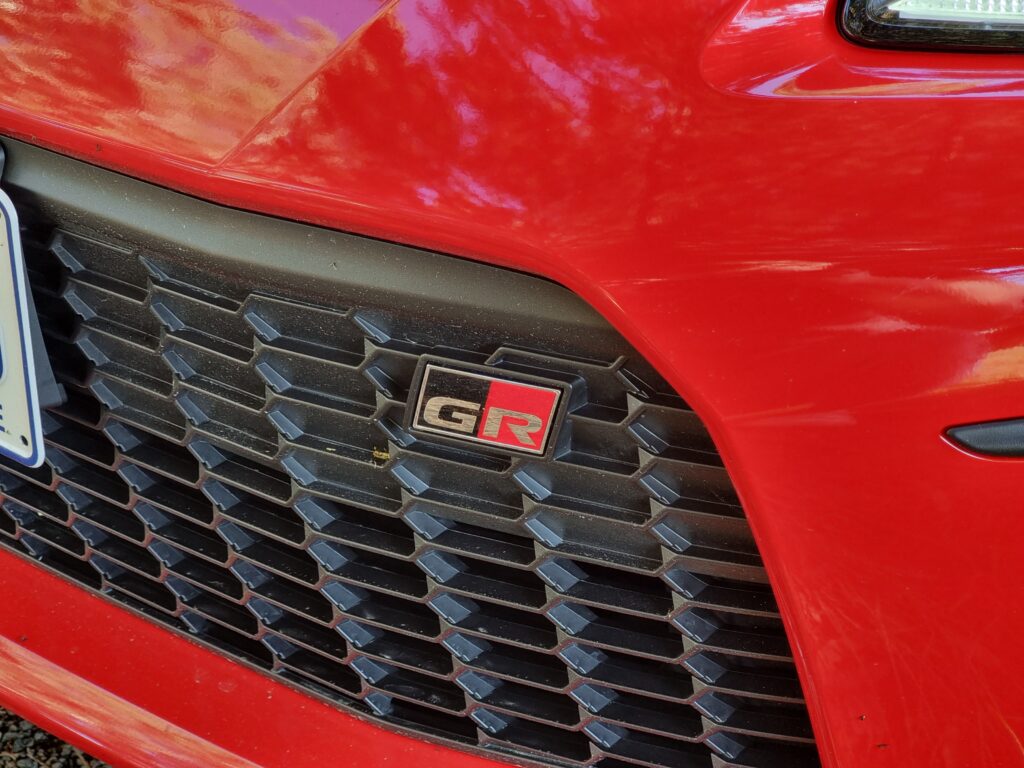
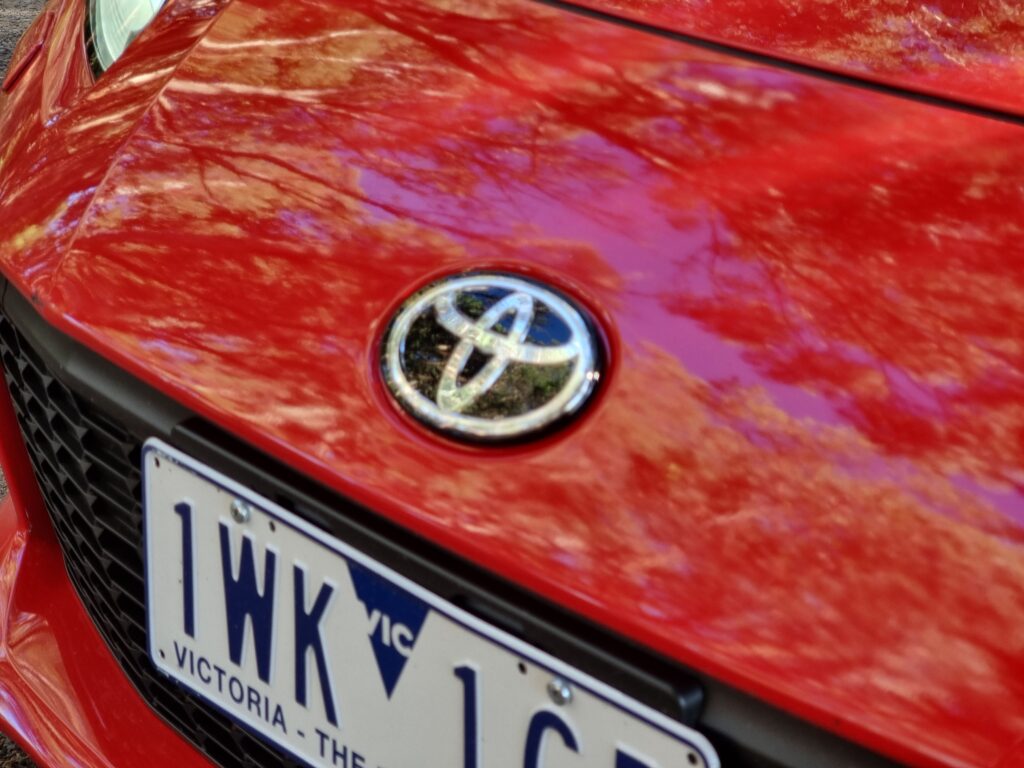
The 2023 Toyota GR86 needs to visit the dealership for a service every 12 months or 15,000km, whichever comes first with the total servicing cost over five years or 75,000km coming out to be a reasonable $1,500 ($300 per service). By comparison, the Mazda MX-5 needs to be serviced every 12 months or 10,000km and will cost $2,077 over five years/50,000km (or $415 per service).
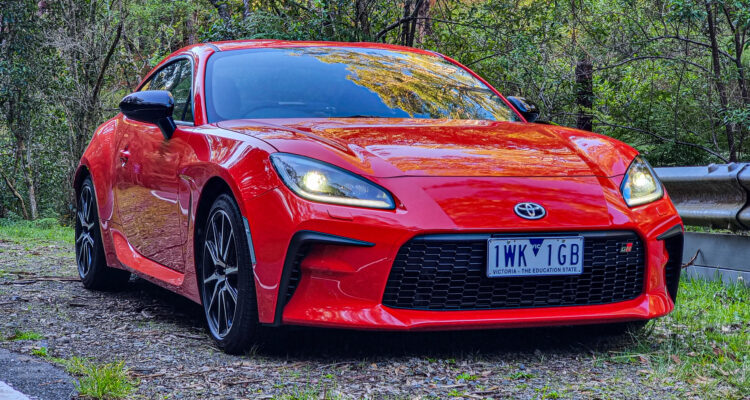
Leave a Reply